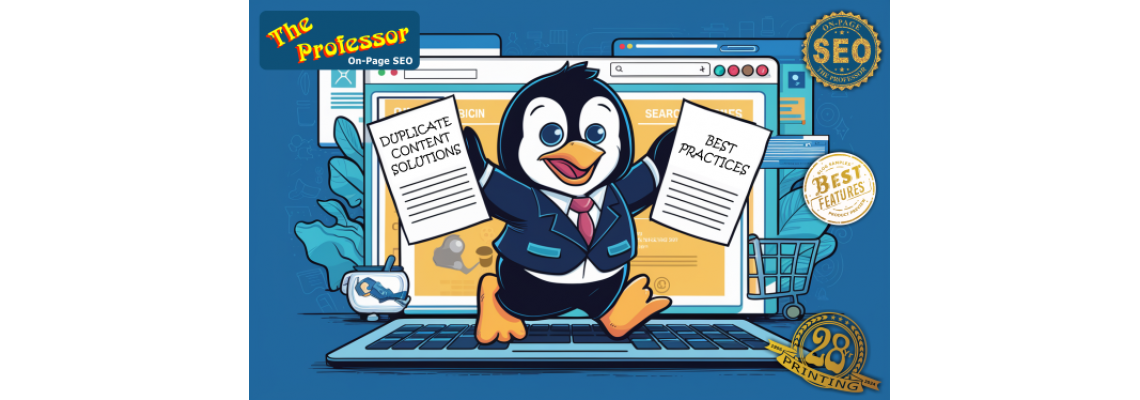
Duplicate content is a common issue that can negatively impact your website's SEO and user experience.
Search engines aim to provide the best possible results for users, and duplicate content can hinder their ability to do so. In this article, we’ll explore what duplicate content is, why it’s a problem, and the best practices to avoid or resolve it.What is Duplicate Content?
Duplicate content refers to blocks of text or entire pages that are identical or very similar to content found elsewhere on your site or across different sites. This can occur for various reasons, including:
- Copied or syndicated content: Reposting the same content on multiple pages or sites.
- Session IDs: URLs with session IDs creating multiple versions of the same page.
- Printer-friendly versions: Separate URLs for printer-friendly versions of pages.
- Scraped content: Content stolen from other sites without proper attribution.
Why is Duplicate Content a Problem?
- SEO Impact: Search engines like Google may struggle to determine which version of the content is the original or most relevant. This can lead to lower rankings for all versions or exclude some from search results entirely.
- Link Equity Dilution: If multiple pages have the same content, the backlinks pointing to these pages get divided, diluting the link equity that could be concentrated on a single page.
- User Experience: Users may encounter the same information multiple times, which can be frustrating and reduce the perceived value of your website.
Solutions and Best Practices for Dealing with Duplicate Content
Canonical Tags: Use the
rel="canonical"link element to tell search engines which version of a page is the preferred one. This is particularly useful for pages with very similar content.html<link rel="canonical" href="https://www.example.com/preferred-page">301 Redirects: If you have multiple URLs leading to the same content, use 301 redirects to send users and search engines to the preferred URL. This helps consolidate link equity and avoid duplicate content issues.
htaccessRedirect 301 /old-page https://www.example.com/new-pageConsistent Internal Linking: Ensure that all internal links point to a single version of each page. This helps search engines and users find the most relevant content.
Avoid Content Duplication: Where possible, avoid duplicating content across different pages. If you must have similar content, consider rewriting or summarizing it to make each page unique.
Noindex Meta Tag: Use the
noindexmeta tag to prevent search engines from indexing pages that are not meant to rank, such as printer-friendly versions or archive pages.html<meta name="robots" content="noindex">Syndication Best Practices: If you syndicate content to other websites, ask them to use the canonical link pointing back to your original content. This way, search engines know where the content originated.
URL Parameters Handling: Configure URL parameters in Google Search Console to indicate how they should be treated. This can prevent duplicate content issues caused by session IDs and tracking parameters.
Content Audits: Regularly audit your website’s content to identify and address duplicate content issues. Tools like Screaming Frog, Siteliner, and Copyscape can help you detect duplicate content.
Conclusion
Duplicate content can pose significant challenges for your website's SEO and user experience. By understanding its causes and implementing best practices like using canonical tags, 301 redirects, and consistent internal linking, you can effectively manage and mitigate the impact of duplicate content. Regular audits and vigilant content management are essential to maintaining a healthy, high-performing website. By staying proactive and following these solutions, you can ensure that your content ranks well and provides value to your users.
For more tips on SEO, digital artwork graphics, and custom printing solutions, check out our other blog posts or contact us for personalized advice.

Leave a Comment